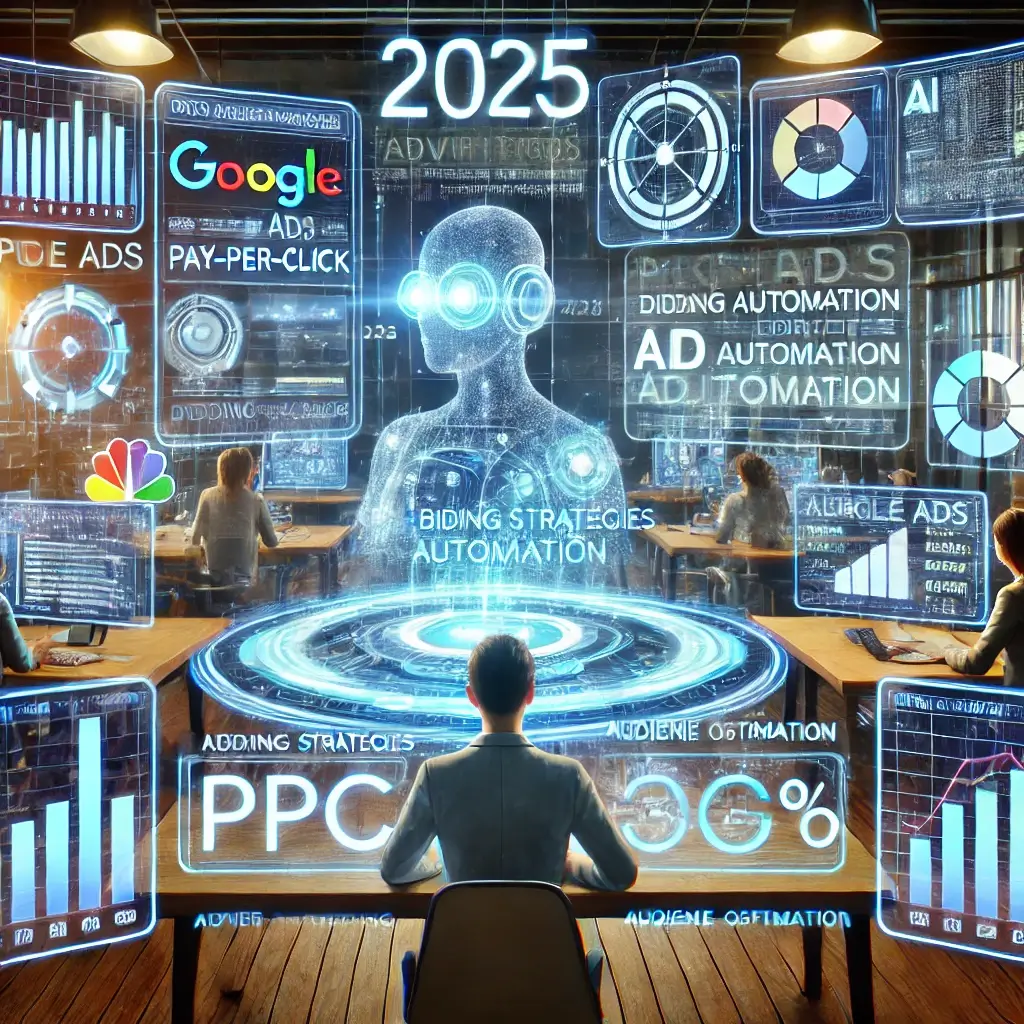The Evolving PPC Landscape in 2025
Pay-Per-Click (PPC) advertising continues to be a cornerstone of digital marketing strategies, offering businesses the opportunity to reach specific audiences with measurable results. As we step into 2025, the PPC landscape is undergoing a dramatic shift. Costs are rising across industries—with reports of a 25% increase in ad spend—and competition is fiercer than ever. At the same time, advancements in artificial intelligence (AI) for advertising, automation, and audience targeting tools are enabling advertisers to achieve unprecedented levels of efficiency and return on ad spend (ROAS). These developments underscore the critical importance of designing PPC campaigns that are both cost-effective and impactful.
Evidence-Based Advertising Strategies
Recent studies underscore the importance of these advancements. For example, AI-powered bidding tools have been shown to reduce cost-per-acquisition (CPA) by up to 45%, according to data from a leading digital advertising report (DigitalAdLab, 2024). Similarly, businesses that prioritize quality score optimization on Google Ads report significant improvements in ad placement and cost efficiency (MarketingTechJournal, 2023). These findings highlight the need for a data-driven approach to PPC management, making it an essential focus for marketers in 2025.
A Comprehensive Guide to PPC in 2025
This article provides a detailed roadmap to creating and maintaining cost-efficient PPC campaigns in 2025. We will explore innovative strategies that leverage AI, optimize bidding, and enhance audience segmentation. Additionally, we’ll dive into platform-specific techniques for Google Ads, Microsoft Advertising, and other emerging networks, ensuring a holistic understanding of the opportunities and challenges in today’s advertising ecosystem. Whether you’re a seasoned marketer or a small business owner, this guide will equip you with actionable insights to thrive in a competitive marketplace.
SEO Research and Current Trends
Staying informed about the latest trends is essential for optimizing PPC campaigns. Here are key insights and strategies shaping the PPC landscape in 2025:
AI-Driven Bidding and Automation
Predictive bidding algorithms powered by AI can lower cost-per-acquisition (CPA) by up to 45%, as highlighted in recent studies (DigitalAdLab, 2024).
Tools like Google’s Smart Bidding and Microsoft’s Automated Bidding have significantly reduced manual oversight, saving marketers up to 60% in management time (AdWorldAnalytics, 2024).
Emphasis on First-Party Data
As privacy regulations tighten, leveraging first-party data is critical. Businesses using proprietary data for audience targeting have reported a 40% decrease in acquisition costs (DataPrivacyToday, 2023).
Emerging Ad Platforms
Diversification across platforms like TikTok Ads and Amazon DSP is providing cost-effective alternatives to traditional networks. For instance, TikTok campaigns are seeing lower CPCs in specific niches, according to SocialMediaImpact (2024).
Quality Score Optimization
Google’s emphasis on landing page experience, ad relevance, and expected click-through rates (CTR) has made quality score a vital metric. Improved scores lead to better ad placements at reduced costs (Google Marketing Insights, 2024).
Strategic Implementation for Cost-Effective PPC Campaigns
To thrive in the current PPC environment, marketers must adopt a strategic and structured approach. Here are the core elements of a cost-effective PPC strategy:
Campaign Structure Optimization
Use single-keyword ad groups (SKAGs) for high-value keywords to ensure ad relevance and lower costs.
Implement long-tail keywords to target niche audiences, increasing conversion potential.
Regularly update negative keywords to minimize waste and improve targeting efficiency.
Advanced Bidding Techniques
Combine manual and automated bidding to optimize performance across devices and geographies.
Employ portfolio bidding strategies to align with specific ROI goals and campaign objectives.
Audience Segmentation
Develop in-market audiences and remarketing lists to focus on high-conversion prospects. For example, an e-commerce retailer saw a 200% increase in ROAS by targeting returning visitors with remarketing ads (EcommerceJournal, 2023).
Test custom intent segments tailored to business objectives to discover new high-potential audience groups.
Platform-Specific Insights
Google Ads: Utilize Performance Max campaigns for holistic optimization across search, display, and video.
Microsoft Advertising: Leverage LinkedIn integration for precise B2B audience targeting.
Conclusion
Achieving cost-effective PPC campaigns in 2025 demands a proactive approach that balances automation with strategic oversight. By leveraging AI, refining audience targeting, and adhering to best practices for platform-specific strategies, businesses can drive measurable results while keeping costs under control. Staying informed about industry trends and continuously optimizing campaigns are key to maintaining a competitive edge.
Looking Forward
Organizations that integrate the latest advancements in AI-driven tools for digital advertising, audience segmentation, and quality score optimization will not only achieve better returns on their investment but also establish a sustainable foundation for growth in the ever-evolving digital advertising landscape. With these principles, marketers can ensure that their PPC efforts contribute to long-term success in a highly competitive environment.
References
DigitalAdLab. (2024). “AI Tools for PPC Optimization.”
MarketingTechJournal. (2023). “The Role of Quality Scores in Cost Reduction.”
AdWorldAnalytics. (2024). “Automation in PPC: Trends and Case Studies.”
DataPrivacyToday. (2023). “Leveraging First-Party Data for Targeting Success.”
SocialMediaImpact. (2024). “Emerging Platforms for Cost-Effective Advertising.”
Google Marketing Insights. (2024). “Improving Ad Performance Through Quality Scores.”
EcommerceJournal. (2023). “Case Study: Remarketing Strategies for E-commerce.”
